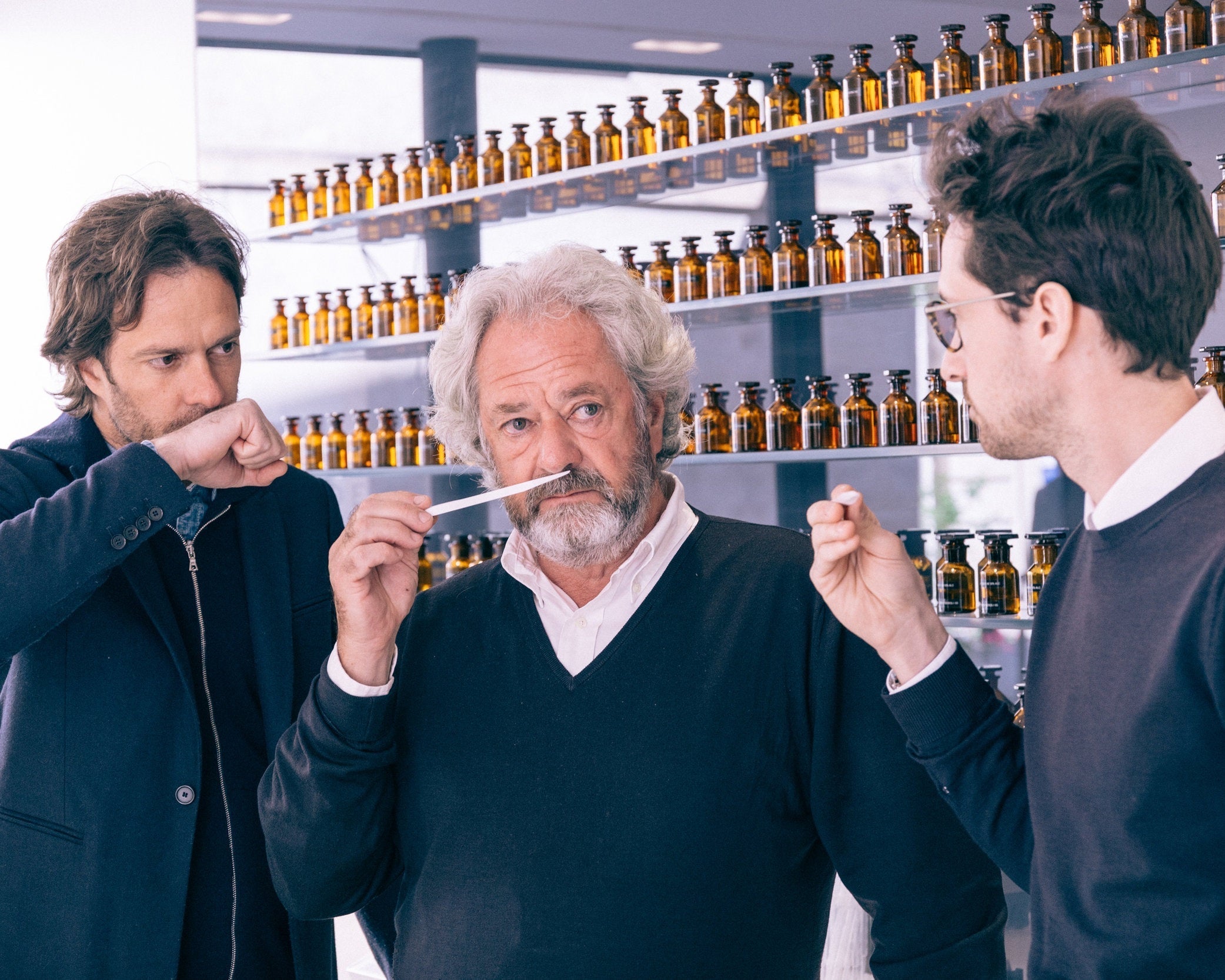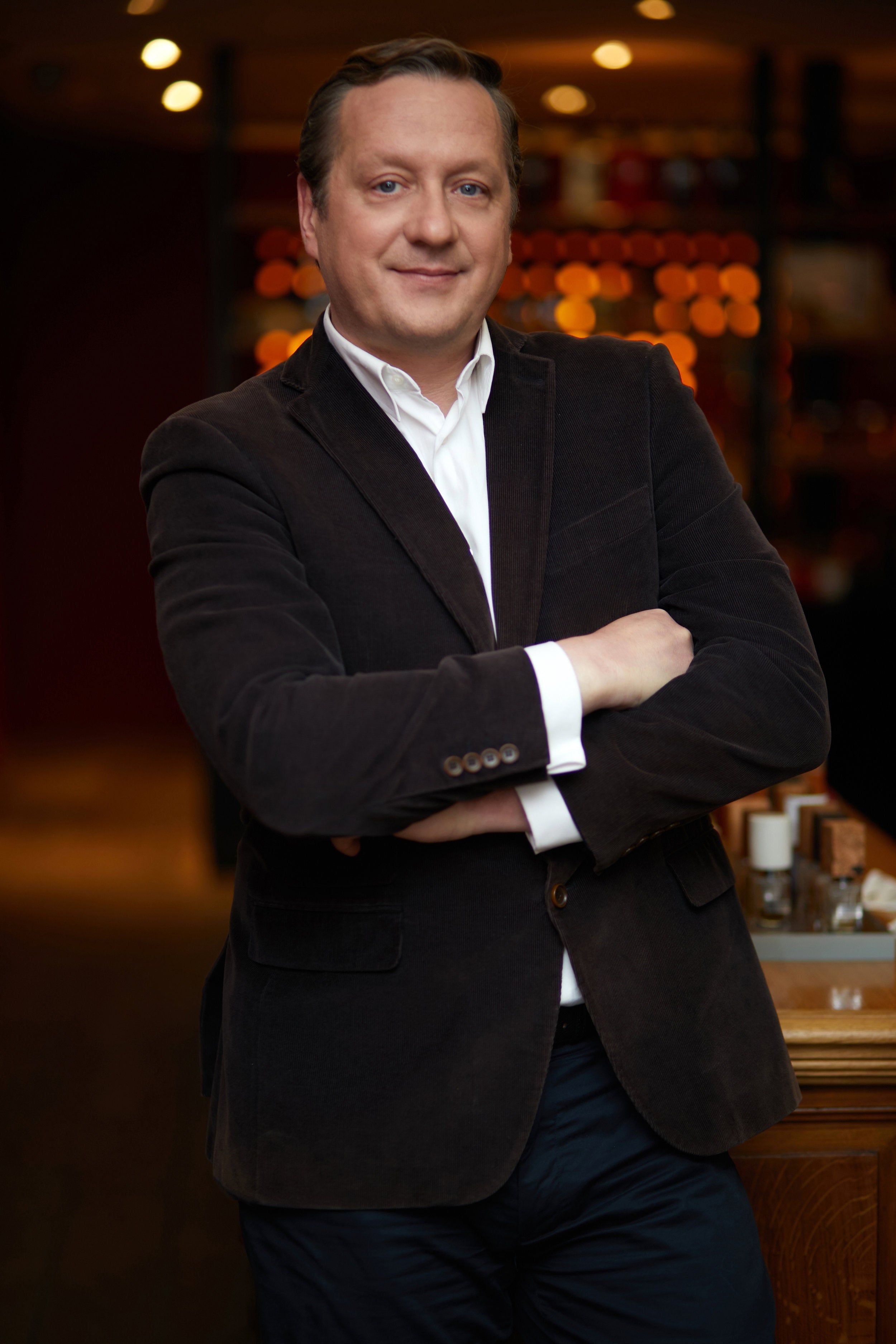
Article: A meeting with perfumer Michel Almairac, the nose behind Parle Moi de Parfum

A meeting with perfumer Michel Almairac, the nose behind Parle Moi de Parfum
Before discovering Une tonne de roses / 8 and Totally White / 126, two masterpieces by Michel Almairac, I had never been overwhelmingly impressed by a floral perfume. Floral scents? Not for me, I thought… And then one fine day, on Rue de Sévigné in Paris, I covered that a fresh rose could smell like – light, joyous, surprising, modern. And I completely fell for an enchanting fragrance that plunges us our olfactory senses into the midst of Parc Monceau in springtime: Totally White / 126.
A meeting with Michel Almairac, a perfumer at the top of his art
You have created and continue to create mythic perfumes for Dior, Chloé, Bottega Veneta and several other major brands. What does Parle Moi de Parfum represent for you?
First of all, it’s an old dream. For a long time I thought about creating a perfume brand some day. And then 5, 10, 15 years went by. I was in a system that was difficult to leave. When my son Benjamin told me he wanted to set up a perfume brand, I told him: “That’ super! Because it’s my dream and you’re going to do it for me.” It’s really him who took the initiative.
What’s it like working with your son?
The advantage with Benjamin is that I can give free rein to my ideas, to projects I’m working on and that I’ve had in mind for several years. When I create perfumes for major brands, changing this and adding that, the final outcome often doesn’t resemble at all what I had wanted to do and why.
I’m fascinated by your perfume Une tonne de roses / 8, and that’s one of the reasons why I had very much wanted to meet you. How did you create such a fresh and joyous rose fragrance?
You should know that the perfume industry is very closely tied to the new synthetic products that allow us to make things that couldn’t be made before. The way a rose fragrance was made 50 years ago wasn’t at all the same as the way it is made today, because we have access to new products, such as rose ketones.
I read “Damascus Rose” in the list of this perfume’s notes. Are we talking here about Essential Oil or Absolute?
There are two main products. Rose Essence or Absolute. The absolute is rich in phenylethyl alcohol, while the essence contains very little. That’s why when the absolute or the essence is used in a perfume, the effect is very different. For Une Tonne de Roses / 8, the essence makes the difference. It contains a lot of volatile notes that smell a little like pear, a little like liqueur, a little like jam, etc. It’s much fresher. Much more ascendant.
Your wife told me that it took you 10 years to give a mute flower, the Syringa, its voice, the heavenly scent found in Totally White / 126. That’s impressive!
First of all, it didn’t take just 10 years. It ended up taking a lot longer! The Syringa is known as a mute flower, a flower from which the scent cannot be extracted, such as lily of the valley, lilac or peony. It must be completely reconstituted. This wasn’t possible before the introduction of new perfumery products.
You know that in Montréal, people smell lily of the valley or lilac when they discover Totally White / 126
You have to know that flowers and flower scents are very close to one another. You can change from a rose to a lily of the valley by changing just one or two ingredients. That’s all. You take rose and add hydroxycitronellal and benzyl acetate and you have lily of the valley. You have lily of the valley and you remove the phenylethyl alcohol and the hydroxycitronellal, and you end up with jasmine. You see? The change from one to the other practically involves removing or changing one or two ingredients in a formula that contains at least 20 or 25, but by changing just one ingredient, you switch to something else. These examples are very simplistic. It’s more technical than that, of course.
Some perfumers work with complex formulas that may contain up to 200 or even 300 ingredients. Others, like Jean-Claude Elena at Hermes, adopt simplicity. In which school are you?
Very simple. Very impressionistic. I’ve always sought to ensure that each ingredient I use has a purpose. That it be in its place. It’s much easier to control when there aren’t a lot of products, because you no longer realize what is happening between them. It’s a little like cooking, like painting, like music – if you use all the notes in music, you end up with a cacophony. Three notes and you have a tune that is there and stays there permanently.
A perfumer named Jean Carles had created a perfumery school in Grasse, known for “the Carles method”. He said: "if you add a product to a formula and you don’t smell it, it isn’t worth the trouble to include it”. The greatest perfumes that people remember always have simple formulas. Take Guerlain’s formulas: they are simple formulas. L’air du Temps by Nina Ricci is an extremely simple formula. The same for L’Eau Sauvage. Edmond Roudnitska was the greatest perfumer of the modern era. He’s the one who invented L’Eau Sauvage. He said: "You give a child modelling clay… He starts mixing blue and white. That gives a blue sky, which is pretty. He adds red and that makes violet; it’s still nice. But then he starts to add green, which results in grey-brown. That’s going to be ugly. It’s the same thing in perfumery. A few well-controlled ingredients that people remember.”
Your perfumery "Parle Moi de Parfum", located on Rue de Sévigné in Paris, offers visitors the opportunity to smell raw materials used in perfumery. This is an extraordinary concept. Where do they come from?
The materials come from Grasse, from the Robertet plant that transforms and manufactures raw materials. In Grasse, we buy our products from different sources and either process them on site or in Grasse. But it isn’t only in Grasse because there’s nothing in Grasse anymore. It still has mimosa, jasmine, rose, a little lavender, a little tuberose, a little violet. It’s always been like that – cocoa, tonka bean, nutmeg, vetiver, sandalwood come from faraway places.
The idea of having customers in the boutique smell raw materials adds an educational aspect. It shows that we talk about perfumes and know what we’re saying. We aren’t talking nonsense or telling legends. What we’re saying is true, it’s an authentic history, a family tradition, a shared passion. More and more, consumers want authentic stories. They want a real history behind the product, and not meaningless marketing “blabla”. There have been some nonsense stories told… rose extraction in satellites in orbit around the Earth… But that’s not what we want. We want a real perfumer’s language. We want to explain to consumers: you like a scent – here’s how the accord is constructed, here’s what’s in it, here’s the concentration, here’s the idea.
What makes you better than others at reproducing nature? Is it your love for nature?
From a commercial point of view, nature isn’t what sells and thus you don’t necessarily find nature in the brands. At this time, what sells are things that are much heavier. One day, a friend told me that Totally White / 126 didn’t work because, compared to others, it has no head note. It isn’t powerful. But it’s very pleasing. If perfumers tomorrow decided to make perfumes that smell like nature, they would also certainly make very good perfumes that smell like nature. But today, there is very little demand.
Do you think there will be a return to nature? The niche is always ahead of the market.
Yes. And it isn’t always the next success that creates a trend. We may be going back to something more figurative, more natural, fresher. Perfumery is always evolving. And there are cycles: you have chypre cycles, floral or powdery cycles, fresh floral cycles.
In conclusion, I would like to ask you, when you think of Parle Moi de Parfum compared to a commercial product, what can I tell Montrealers who are unfamiliar with the niche? What makes it different from commercial perfumery?
The essential difference between a niche perfumery, like the one we’ve made, and so-called commercial, mass distribution perfumery is that we make perfumes that will become passionate favourites. We aren’t trying to make perfumes that please everyone. It’s sufficient for there to be some people who love them and that’s fine, that’s enough. This perfume then will have a true and unique character that will please only certain people.
Parle Moi de Parfum is available exclusively at H Parfums, 5064 Hutchison street in Montreal and on our website hparfums.com
Interview conducted in Paris in spring 2018
Text: Louise Lamarre

Leave a comment
This site is protected by hCaptcha and the hCaptcha Privacy Policy and Terms of Service apply.


